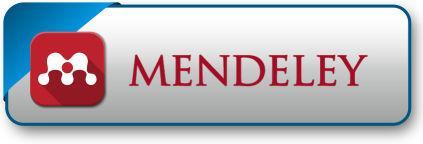Value Chain Analysis Indonesian Animal Husbandry Industry
DOI:
https://doi.org/10.24853/jasat.2.1.21-28Keywords:
Industrial livestock base, Industrial value chain, Prime remover industry.Abstract
At least until 2017, a very low production capacity coupled with livestock methods that are still traditional causes almost all major livestock commodities in Indonesia to close their deficits through imports. Meat, milk, eggs, and even the skin, all of them still cannot be fulfilled entirely from the country.As much as 83% of raw material for the dairy industry is imported. Leather processing industry, importing raw materials for cow leather by 3 million pieces and 13.5 million pieces (sheep and goat skin). Specifically for beef, it was noted that 2016 was the highest volume of beef imports reaching 132.74 thousand tons. As for eggs in general, the pattern of development of export volume is lower than the rate of imports per year. Data on chicken meat imports and their values during the 2012-2016 period showed quite high values compared to export volumes. Knowledge of industry value chains is needed to explore the gap in the dependence of imported raw materials.The value chain analysis carried out in the livestock base industry chain shows a map of the relationship between a number of livestock industry bases in Indonesia so as to facilitate the breakdown of dependence on raw materials. Analysis carried out on the main chain (livestock base) and joint chain (supporting base). Five farm-based industry value chains have been assembled, namely: 1) beef-cattle base industry; 2) industrial livestock-poultry meat base; 3) dairy-based livestock industry; 4) leather-based industry base; and 5) egg-based livestock industry. Core industries or prime movers namely: a) RPH on beef chains, b) industrial pasteurization in the milk chain; c) tanning industry on leather chains; d) food freezing industry on chicken meat chains; and e) egg packing house on the egg chain. The existence of the core industry greatly determines the position of the raw materials of the downstream industry.Downloads
References
Abid, T. 2010. Potensi pemanfaatan wol lokal sebagai bahan subtitusi serbuk gergaji untuk meningkatkan stabilitas dimensi dan sifat innsulasi papan partikel. Skripsi Institut Pertanian Bogor, Bogor.
Bangga T.R. N.K. Agrawal, S.C. Sharma. 2002. Industrial Engineering and Management Science. Khanna Publishers. New Delhi.
Departemen Perindustrian RI. 2009. Roadmap Industri Susu. Dirjen Industri Agro dan Kimia, Departemen Perindustrian, Jakarta.
Duldjaman, M., Wiradarya, T.R., & Muttaqin M.I.H. 2006. Daya pintal dan kekuatan Benang bulu domba priangan dan peranakan merino. Media Peternakan. 29(3) Hal. 187-192
Edriss, M. A., Dashab, G., Ghareh, A. A. A., Nilforooshan, M. A., &Movassagh, H. 2007. A study on some physical attributes of naeni sheep wool for textile industry. Pakistan J. Bio. Sci.10(3) Pp. 415-420
Energy Information Administration. 2000. World Energy Consumption. United States Energy Information Administration, New York.
FAO] Food and Agriculture Organization of The United Nation. 2003.National Report on Animal Genetic Resources Indonesia.Roma (IT): FAO. [diakses 2 November 2013]. Tersedia pada: http://ftp.fao. org/docrep/fao/010/a1250e/annexes CountryReports/Indonesia.pdf.
Grant, J.L. 2003. Foundation of Economic Value Added. John Willey & Sons, Inc. Hoboken, New Jersey.
Hadiguna, RA, 2016, Manajemen Rantai Pasok Agroindustri: Pendekatan Berkelanjutan untuk Pengukuran Kinerja dan Penilaian Risiko. Andalas University Press, Padang.
Kaplinsky, R and M. Morris. 2000. A Handbook For Value Chain Research. Bellagio Workshop in September 2000
Kementerian Pertanian. 2017a. Outlook Komoditas Pertanian- Sub Sektor Peternakan : Daging ayam buras. Pusat Data dan Sistem Informasi Pertanian, Sekretariat Jenderal Kementerian Pertanian, Jakarta.
Kementerian Pertanian. 2017b. Outlook Komoditas Pertanian-Sub Sektor Peternakan : Daging ayam ras. Pusat Data dan Sistem Informasi Pertanian, Sekretariat Jenderal Kementerian Pertanian, Jakarta.
Kementerian Pertanian. 2017c. Outlook Komoditas Pertanian-Sub Sektor Peternakan : Daging sapi. Pusat Data dan Sistem Informasi Pertanian, Sekretariat Jenderal Kementerian Pertanian, Jakarta
Kementerian Pertanian. 2017d. Outlook Komoditas Pertanian-Sub Sektor Peternakan : Telor. Pusat Data dan Sistem Informasi Pertanian, Sekretariat Jenderal Kementerian Pertanian, Jakarta
Kementerian Pertanian. 2017e. Outlook Komoditas Pertanian-Sub Sektor Peternakan : Susu Pusat Data dan Sistem Informasi Pertanian, Sekretariat Jenderal Kementerian Pertanian, Jakarta
Knight, J. dan S. Satchell. 2002. Performance Measurement in Finance : firm, funds, and managers. Butterworth –Heinemann, Oxford.
Nang’ole, E., D. Mithöfer and S. Franzel. 2011. Review of guidelines and manuals for value chain analysis for agricultural and forest products. Published by the World Agroforestry Centre United Nations Avenue, Nairobi, Kenya
Talib, C., I. Inounu., dan A. Bamualim. 2007. Retrukturisasi Peternakan di Indonesia. Analisa Kebijakan Pertanian Vol.5 No.1 Pp. 1-14
Yusdja, Y., N. Ilham, dan W.K.Sejati. 2003. Profil dan Permasalahan Peternakan. Forum Penelitian Agro Ekonomi. Vol. 21. No. 1. Pp. 44-56
Downloads
Published
Issue
Section
License
COPYRIGHT POLICY
The author(s) of an article published in the Journal of Applied Sciences and Advanced Technology (JASAT) retains ownership of the intellectual property rights in work (s).
PUBLISHING RIGHTS
The author(s) of an article published in the Journal of Applied Sciences and Advanced Technology (JASAT) have unrestricted publication rights. The authors give the Journal of Applied Sciences and Advanced Technology (JASAT) the right to publish the article and designate the Faculty of Engineering Universitas Muhammadiyah Jakarta Publishing as the original publisher of the article.
LICENSING POLICY
JASAT is an open-access journal that follows the Creative Commons Non-Commercial 4.0 International License (CC BY-NC 4.0), which states that:

Under this license, the reusers must give appropriate credit, provide a link to the license, and indicate if changes were made. Users may do so in any reasonable manner, but not in any way that suggests the licensor endorses users or their use.
Please take the time to read the whole license agreement (https://creativecommons.org/licenses/by-nc/4.0/). As long as reusers follow the license conditions, the owner cannot withdraw these freedoms. The following components are included under this license:
 Attribution: Users must provide appropriate attribution, including a link to the license, and indicate whether or not they made any modifications. Users are free to do so reasonably, but not in a manner that indicates the licensee approves of their usage.
Attribution: Users must provide appropriate attribution, including a link to the license, and indicate whether or not they made any modifications. Users are free to do so reasonably, but not in a manner that indicates the licensee approves of their usage.
 NonCommercial: Users may not use the material for commercial purposes.
NonCommercial: Users may not use the material for commercial purposes.












_2.png)


1.png)

2.png)
